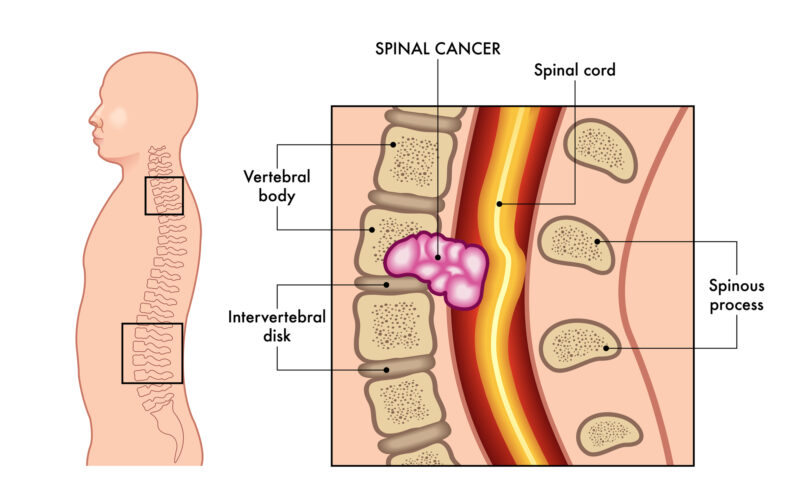Every year an estimated 10,000 Americans will develop metastatic spinal tumors.
While this represents only a small percentage of the population, metastatic spinal tumors are a rare, yet devastating disease, that the staff at Kuether Brain & Spine is equipped to diagnose and treat.
Due to its rarity, metastatic spinal tumors often take some time to identify and properly diagnose. Before we dive deep into the symptoms, causes and more, let’s define metastatic spinal tumors.
Metastatic spinal tumors are abnormal growths found in the spinal column.
They typically occur when cancer elsewhere in the body has spread to the spinal cord and forms the abnormal growths.
Metastatic spinal tumors, or the secondary tumors, are typically found in the vertebrae of the spine or in the dura matter (the protective covering of the spinal cord).
In terms of symptoms of metastatic spinal tumors, one of the first signs is back pain.
Of course there are many causes for back pain so a process of elimination usually allows medical professionals to appropriately diagnose the problem.
Other times, metastatic spinal tumors are completely asymptomatic, increasing the difficulty for diagnosis. As mentioned, metastatic spinal tumors usually stem from cancer elsewhere in the body.
Most commonly those with cancer in the kidneys, lungs, and bones spreads to the spinal cord and causes metastatic spinal tumors.
The spread often occurs via the blood stream. The cancer cells move from one area of the body to another and start to attack healthy organs.
Once metastatic spinal tumors begin to grow, the symptoms often become more severe and noticeable.
These more severe symptoms can include fractures in the spine, extreme back pain, spinal instability, numbness or weakness in the legs or arms, and an overall decrease quality of life.
A majority (70%) of metastatic spinal tumors often occur in the thoracic region (which runs from the base of the neck to the abdomen).
It is also common for metastatic spinal tumors to form in multiple regions simultaneously including the lumbar (lower back) and neck region.
Again metastatic spinal tumors are rare. Those, however, with cancer or a history of cancer are at the greatest risk and should work closely with their medical team if they notice prolonged and increasing back pain.
The treatment of metastatic spinal tumors often aims to control or slow the spread.
Chances of a full recovery are low since metastatic spinal tumors form as a result of advanced cancer. Treatment options include surgical resection, stereotactic radiosurgery, fractionated radiation and chemotherapy.
Of course each patient’s journey is unique and specific to their medical history so treatment may vary.










